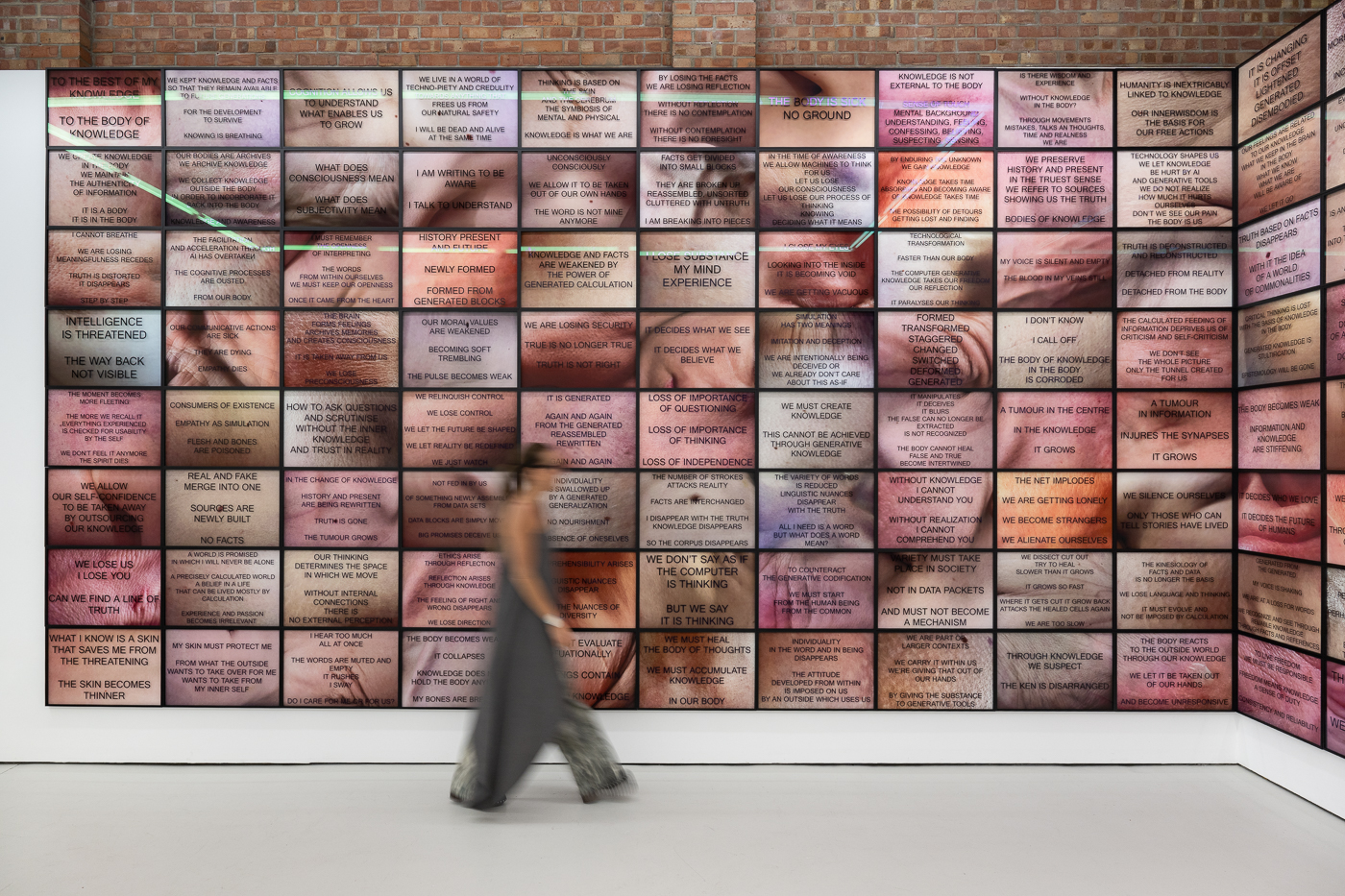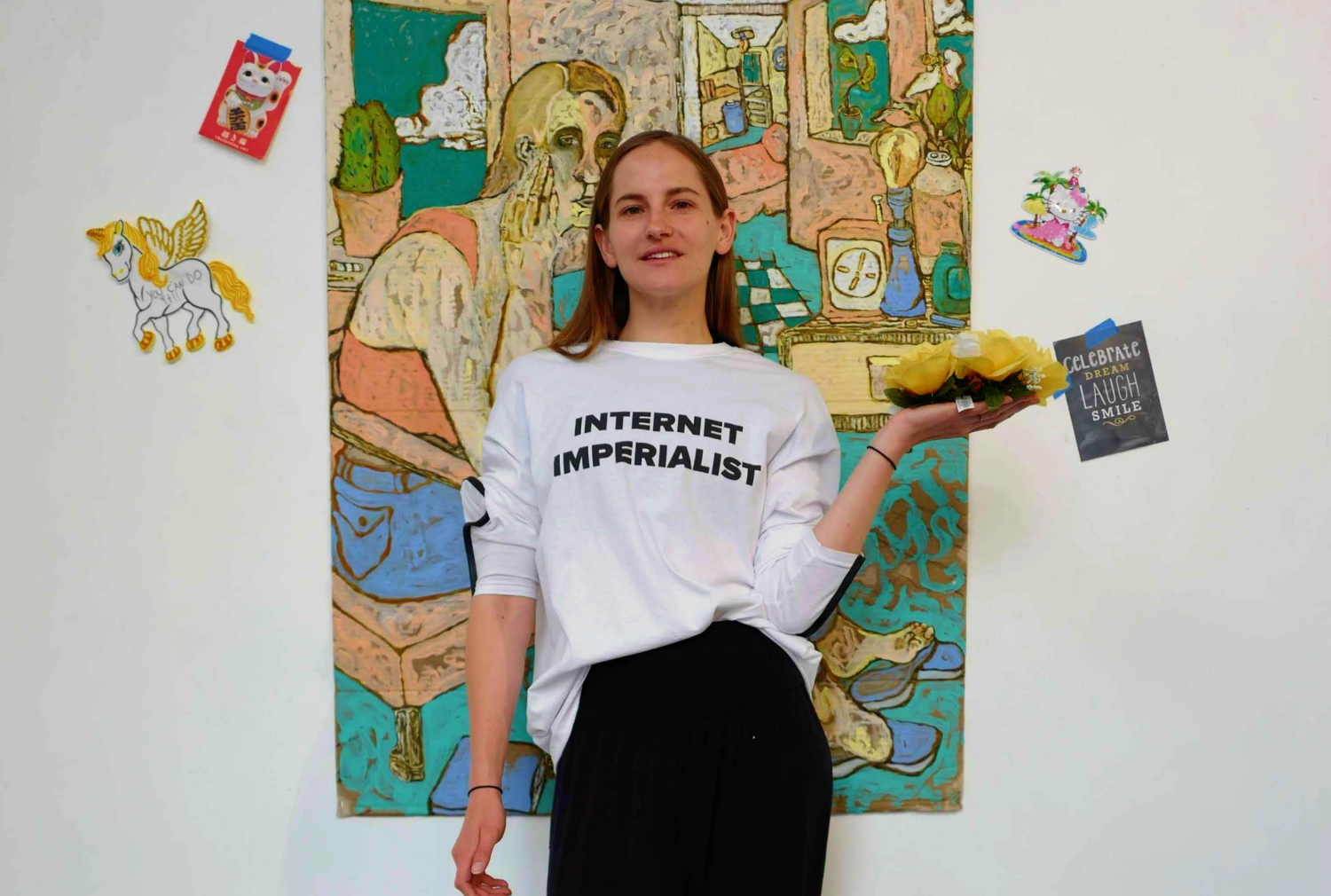Amy Haddad, Create Hub’s editor, considers the attention that VR recently gained following a conversation with Gretchen Andrew.
Virtual Reality (VR) has been creating quite a buzz recently. Facebook obtained Oculus VR, a VR technology company, last year. Then in June 2015, Facebook and Oculus revealed the Oculus Rift, a VR headset, which will go on sale next year. “We’re looking forward to an exciting future together,” the two companies have said jointly, “building the next computing platform and reimagining the way people communicate.” The strides VR has made in recent years and the backing of Facebook suggest that VR has the ability to impact many aspects of life—including the arts.
VR has been around for decades, dating back to the 1950s. Millennials may remember wearing bulky VR devices during the 1980s and 1990s. Fast-forward to the 21st century, and much has changed. Tellingly, Palmer Luckey, the founder of Oculus VR, invented the Rift, which is smaller, sleeker and has the capacity to influence more than just video game experiences. Mark Zuckerberg, co-founder and chief executive of Facebook, recalled his initial experience with the device: “When you put on the goggles, it’s different from anything I have ever experienced in my life.” When applied to the arts, VR is already beginning to upend traditional art practices, prompting the question: How will VR impact the visitor experience, exhibitions and the physical gallery space?
London-based, American artist Gretchen Andrew recently demonstrated the possibilities of VR during her 2015 exhibition “Alternate Reality,” at De Re Gallery in Los Angeles, California (which ran February 5 through March 9, 2015). Only three of her physical paintings filled the gallery walls, one of which could be seen both physically at De Re Gallery and in her digital gallery. An additional 12 to 15 paintings were seen virtually by wearing one of the gallery’s five VR headsets, which Andrew made in collaboration with immersiv.ly and Amplified Robot. “Alternate Reality” was what Steph Sebbag, owner of De Re Gallery, called “a first, true virtual experience that is fully immersive”—a quality that proved important for the viewer experience it generated.
VR and the Viewer Experience
“Put on these goggles, go nowhere, and be transported anywhere,” as Matthew Schnipper describes VR in his article, “Seeing is Believing: The State of Virtual Reality.” By wearing a VR headset in the “Alternate Reality” exhibition, visitors entered a digital replica of De Re Gallery filled with Andrew’s paintings. VR is not only a tool, a digital means to see art, but also a medium—one that can literally transport viewers into a different world and engage them in new ways.
That said, animations were paired with Andrew’s paintings to “reveal information that is traditionally hidden behind the surface of a painting,” as the artist puts it. This is an important feature. By engaging with the animations, visitors learned about the artist’s process of creation: seeing chalk underdrawings or observing Google Glass recordings that show a painting being made, all while Andrew narrated. She gives this analogy: “Think of it like a museum audio tour on steroids.” To that end, as the world becomes increasingly digital, this show indicates the collision between our physical and digital worlds.

It’s worth noting that VR can generate different user experiences. Of course there is the novelty factor with VR. Andrew recognized that some people never moved beyond the surface level: a digital gallery. Adding to this was the learning curve associated with the VR headset, such as understanding how to navigate. “Everyone’s response is so personal to their body,” she explains. Some people never learned to use the technology, others became motion sick; more still, some visitors stood stationary, while others started moving right away, Andrew observed. With time, visitors began to see and understand the paintings’ interfaces. “We think paintings as windows on to the world,” Andrew says. “These paintings become doors that can literally take you to different places.” Indeed, this is the power of VR.
Andrew is not alone. Viewers travel virtually to a Syrian refugee camp in Jordan in the 2015 VR film, “Clouds Over Sidra,” created by Chris Milk, a director and photographer, and Gabo Arora, a United Nations advisor and filmmaker, in association with VRSE.works, a VR company. By wearing a VR headset, viewers “enter” the 360 degree world of a twelve-year-old Syrian refugee, Sidra.
Imagine “when you look down, you’re sitting on the same ground that [Sidra’s] sitting on,” Milk describes in his March 2015 TED Talk, “Chris Milk: How Virtual Reality Can Create the Ultimate Empathy Machine.” Rather than watching Sidra’s world, viewers are in it. As a result, “you feel her humanity in a deeper way. You empathize with her in a deeper way,” Milk says. With the aid of VR, “Clouds Over Sidra” virtually transports people onto a road less traveled, seeing and understanding the world through a different lens.
VR’s Practical Side
Given the potential for VR to subvert the traditional viewer experience, it is worthy to consider how the practical benefits of this technology will affect art exhibitions and physical art spaces. Among the many, consider access. With VR, an artist could potentially have multiple iterations of the same show in various locations simultaneously. The gallery wins, too. Andrew’s virtual show enabled De Re Gallery to have an additional physical exhibition taking place during her virtual one. Alternatively, if an artist has more images than can fit into a gallery, VR could function as an extension of the gallery space, Sebbag suggests.
More still, viewers with access to the technology could see the exhibition from home. In fact, they still can. “[VR] becomes an archive of past exhibitions,” as Sebbag puts it. Although “Alternate Reality” ended in March 2015, viewers with Oculus or smartphone-based lenses such as Zeiss or Google Cardboard can still view it in VR. What’s more, De Re Gallery was able to exhibit an entire show without shipping all of Andrew’s artwork from London, where Andrew is based, to the gallery in Los Angeles. So VR could lessen the processes and costs associated with an exhibition.
Does VR mean the end of Physical Art Galleries?
For all that, will VR replace the physical gallery space? Although Sebbag acknowledges its many advantages, he does not foresee the end of the physical gallery. Andrew concurs: as artists continue to make tactile work, physical gallery spaces are still an option. However, Andrew sees VR creating a “new priority for physical space in a different way.” She gives this example: if you cannot attend a show in New York, VR is a good next option. This being so, those considering a physical space may want to ask themselves a critical question: why?
Despite the many benefits of VR, there are also challenges. Cost and usability are two, so is motion sickness. Even still, creatives today are demonstrating the expansive power of this technology. More broadly, VR will foreseeably have a tremendous impact on the arts. At the same time, artists using VR appear to be doing what artists have done for decades. As Andrew aptly puts it: “I am also in this lineage of painters who have always looked at how to make my work more public, how to get more more people in front of it and make it understood in a contemporary context.”
So perhaps the turn towards VR in art is not much different than the uptake of other technologies throughout time. Take, for instance, when tubes of paint replaced hand mixed versions. This sole development has had a monumental influence. “Without paint in tubes,” Renoir once argued, “there would have been no Cézanne, no Monet, no Sisley or Pissarro.” The same will probably be true for VR, but perhaps to an even greater degree: not only impacting artists and their practices, but also viewer experiences and gallery spaces.


